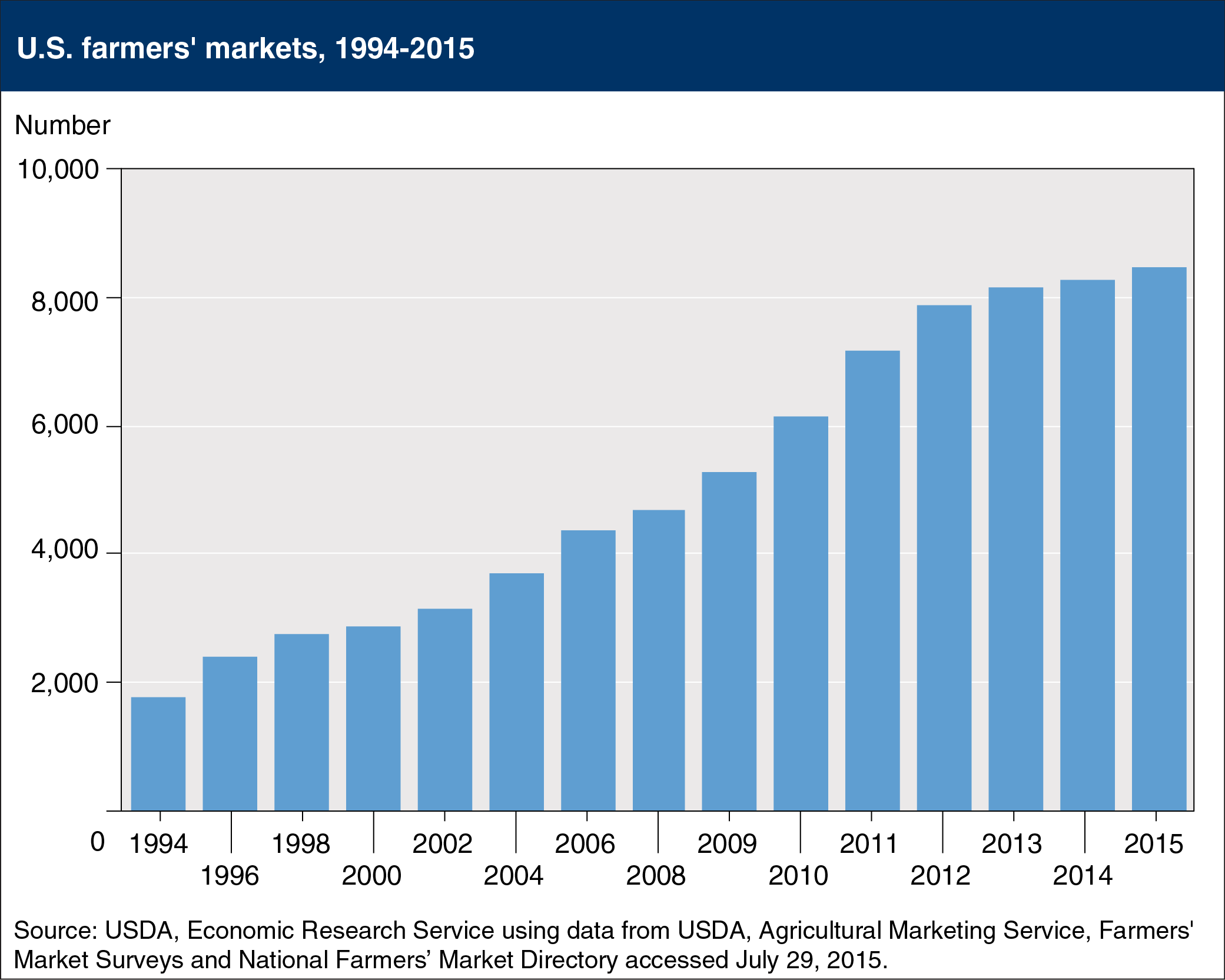Number of U.S. farmers markets has nearly tripled over the last 15 years
- by Economic Research Service
- 8/7/2015

A farmers’ market is a common area where several farmers gather on a recurring basis to sell fresh produce and other farm products directly to consumers. The number of farmers’ markets rose to 8,476 in 2015, up from 2,863 in 2000 and 1,755 in 1994, according to USDA’s Agricultural Marketing Service. Farmers’ markets tend to be concentrated in densely populated areas of the Northeast, Midwest, and West Coast. Generally, farmers’ markets feature items from local food systems, although depending on the definition of “local,” some vendors may come from outside the local region, and some local vendors may not sell locally produced products. The growing number of farmers’ markets could reflect increased demand for local and regional food products based on consumer perceptions of their freshness and quality, support for the local economy, environmental benefits, or other perceived attributes relative to food from traditional marketing channels. This chart updates one found in the ERS report, Local Food Systems: Concepts, Impacts, and Issues, ERR-97, May 2010.

